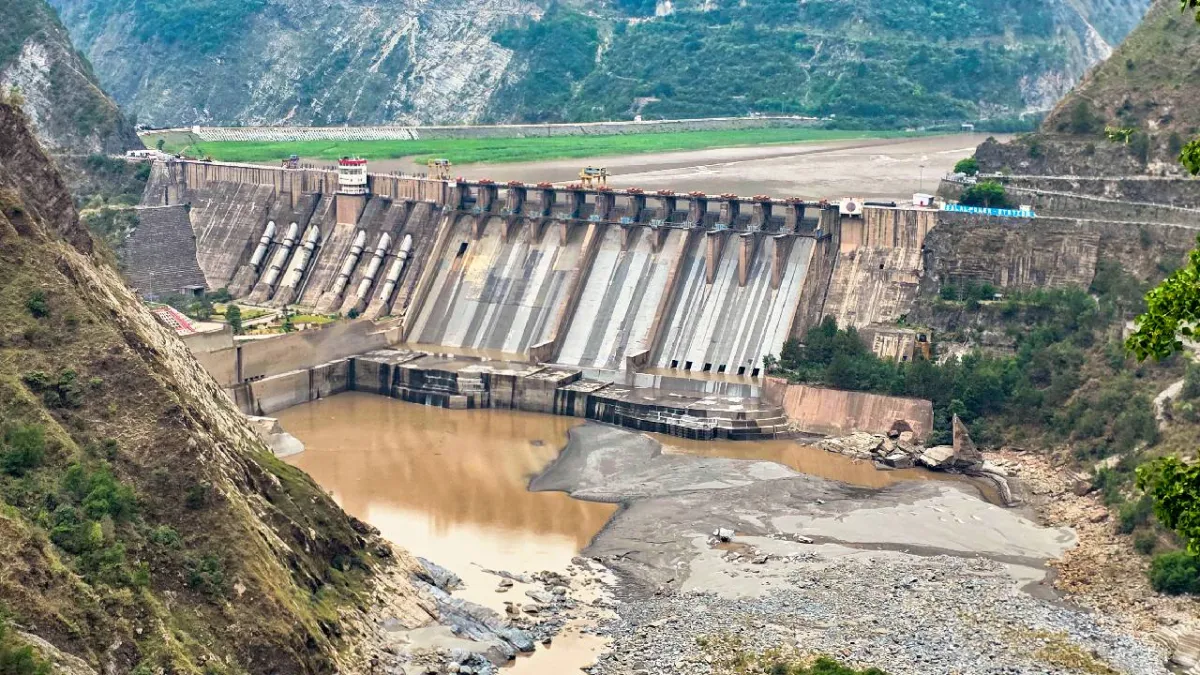The continuous decline in the flow of western rivers - Indus, Jhelum and Chenab from India has forced Pakistan to release more water than it receives, straining its drinking water and irrigation supplies. Though such a situation is not uncommon during the pre-monsoon period, it may worsen in the coming weeks.
India's ongoing desilting and flushing of dams in Jammu & Kashmir, aimed at boosting its storage capacity, will further reduce downstream flow into Pakistan.
Pakistan releasing more water than it receives
According to the daily water report issued by Pakistan’s Indus River System Authority (IRSA), the country discharged 11,180 cusecs more water than it received on Wednesday. The collective outflow at key monitoring points — Tarbela (Indus), Mangla (Jhelum), Marala (Chenab), and Nowshera (Kabul) — stood at 252,791 cusecs, compared to an inflow of 241,611 cusecs. This imbalance is likely to deepen water scarcity in Punjab and Sindh, two provinces heavily reliant on these rivers.
In Punjab, where kharif cropping has begun, water supply dropped to 114,600 cusecs from 143,600 cusecs on the same day last year — a decline of 20%. With nearly a month remaining before the monsoon arrives, storage in Mangla and Tarbela dams is already approaching ‘dead levels’, meaning water cannot be drained by gravity below this point.
A further drop in inflow from India could leave Pakistan with limited options for sustaining farming until the rains begin. IRSA had already flagged this concern last month, projecting a 21% water shortage for the early kharif season (May 1–June 10), citing a sharp decline in Chenab’s flow at Marala due to reduced Indian supply. A 7% shortage is expected for the late kharif season (June 11–September 30).
Although the situation may improve with the onset of the monsoon in early July, effective water management remains challenging. With India having suspended the Indus Waters Treaty following the April Pahalgam terror attack, it is no longer obligated to share water flow data with Pakistan, complicating the latter's planning and regulation efforts.
Indus Waters Treaty suspension
India has affirmed time and again stated that the Indus Waters Treaty with Pakistan will remain suspended until Islamabad "credibly and irrevocably" ends its support for cross-border terrorism, stating that "water and blood cannot flow together."
The Miinistry of External Affairs has said any future bilateral engagement with Pakistan would be limited to discussions on the vacation of territories in Kashmir currently under illegal occupation.
The treaty suspension was announced on April 23 as part of a series of punitive measures taken by India in response to the Pahalgam terror attack, which killed 26 civilians the previous day.
In a further response, India conducted precision strikes on nine terror infrastructure targets on May 7.
Pakistan retaliated with attempted attacks on Indian military bases on May 8, 9 and 10. These efforts were met with a strong counter-response from India, which inflicted significant damage on several key Pakistani military assets, including air bases, air defence systems, command and control centres, and radar installations.

